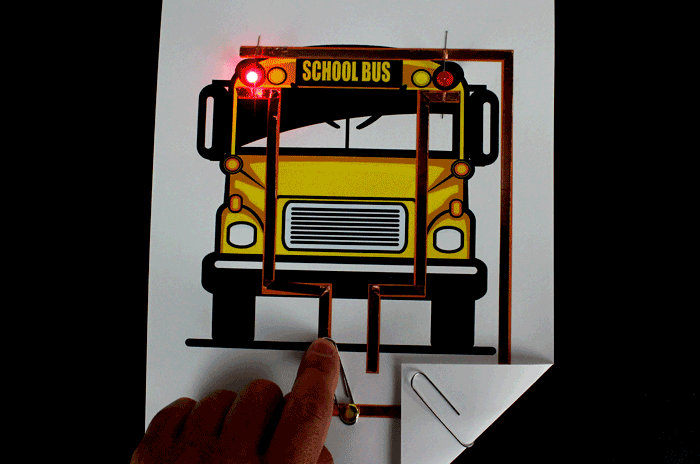
Paper circuits are a fun way to learn the basics of electricity while seeing how circuits are created.
This project will show you how to create a paper circuit school bus with flashing lights using copper tape, an LED and a coin cell battery.
The switch in this project is known as a Single Pole Double Throw or SPDT. A single source of power goes to this switch and yet it can control two separate LEDs at different times. This switch will allow you to make the school bus lights flash on and off.
Project Time: 15 Minutes
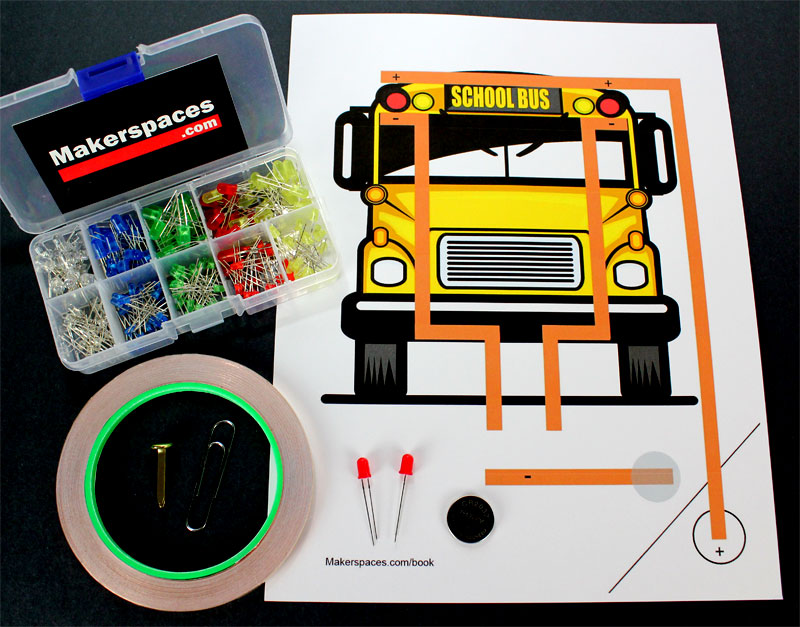
Project Materials
- Copper Tape w/ Conductive Adhesive
- (2) LEDs – Red
- (1) CR2032 Coin Cell Battery
- (1) Paperclip – Jumbo size
- (1) Brass Fastener – 1-inch
- School Bus Project Template – PDF
Need the materials for this project? We have a paper circuit starter kit & ebook available. The kit includes copper tape, LEDs and CR2032 batteries. Also included is a project ebook with 45 project templates.
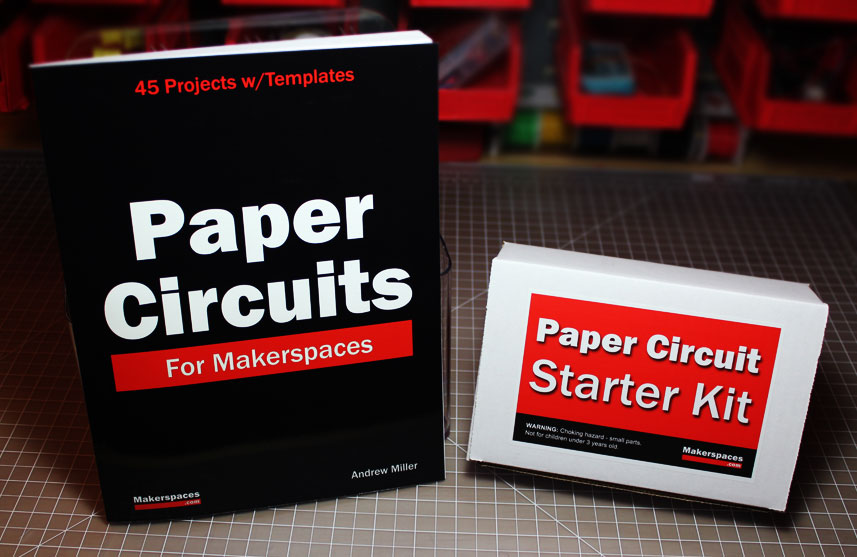
Step 1 – Print Project Template
Start by downloading the school bus project template found at the link below:
School Bus Paper Circuit Template – PDF
Once you have the template, print it in color or black and white. You can also print the template on yellow paper to help you save printer ink and achieve the similar effect.
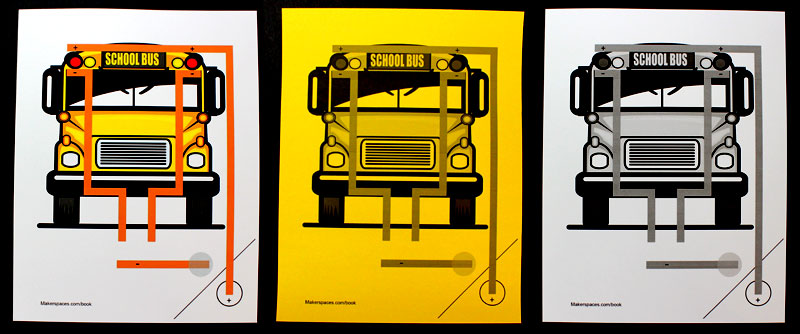
Step 2 – Apply Copper Tape
The next step is to create the circuits using copper tape. We highly recommend that you apply a single strip of copper tape to each section versus cutting it into smaller pieces. A single strip will allow the electricity to flow better to the LED without interruption. If you do choose to cut the copper tape, make sure it has conductive adhesive like the type we sell in our paper circuit starter kits.
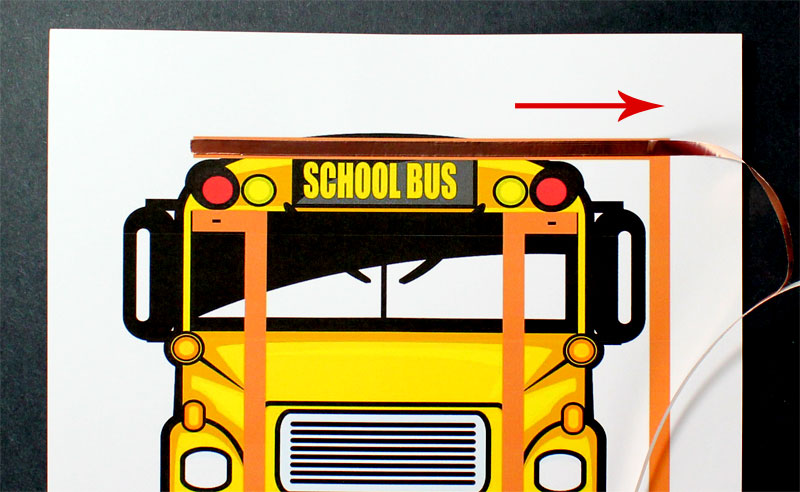
Begin by applying the copper tape along the brown line until you come to the corner.
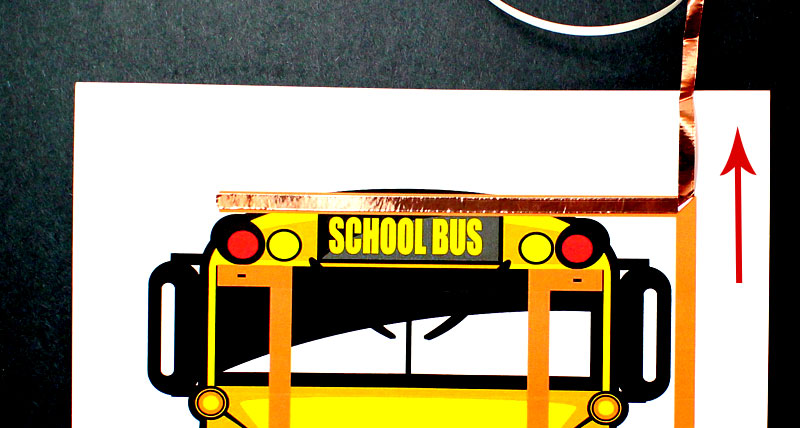
Next, fold the copper tape at a 45 degree angle in the opposite direction in which you are going.
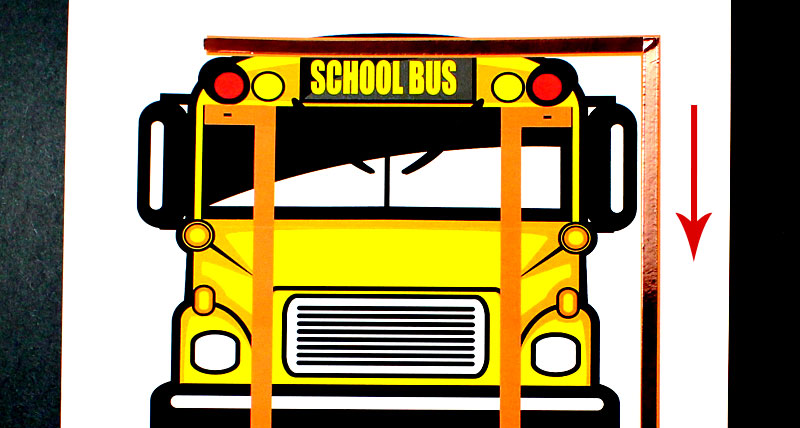
Lastly, use your fingernail to make an indentation in the copper tape and then fold it straight down along the brown line. Follow these steps with the rest of the copper circuit lines.
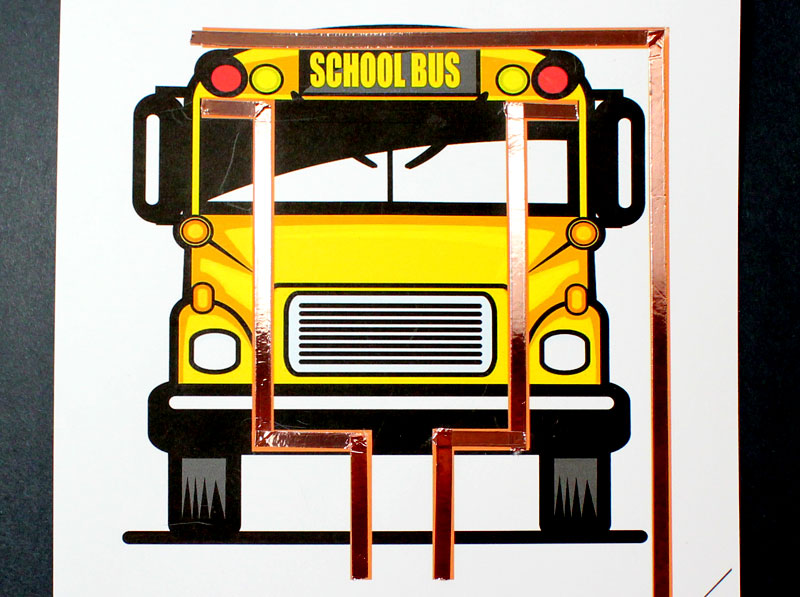
Step 3 – Attach The LEDs
Now it’s time to attach the LEDs to your circuit. If you look at the LED closely, you will notice one leg is longer than the other. This long leg is the positive (+) side of the LED.
Go ahead and bend both legs at a 90 degree angle. Make sure you remember which leg was the long one. Another way to tell which leg is which is by looking at the red plastic cap. If you look closely you will see one side has a FLAT edge. This flat side indicates the short leg or negative (-) leg of the LED.
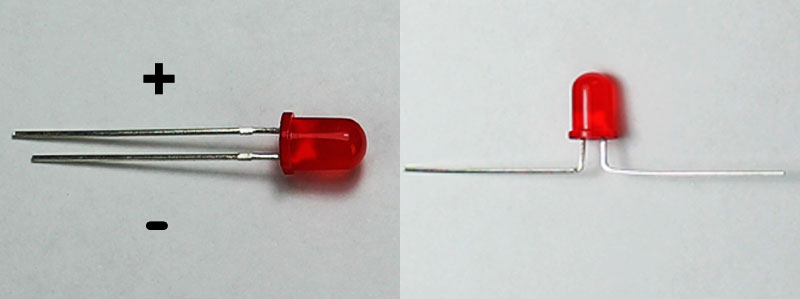
Mount both legs of the LED to the template using copper tape. Make sure the legs are making good contact with the copper tape below. Rub the copper tape with your finger to ensure a good connection.
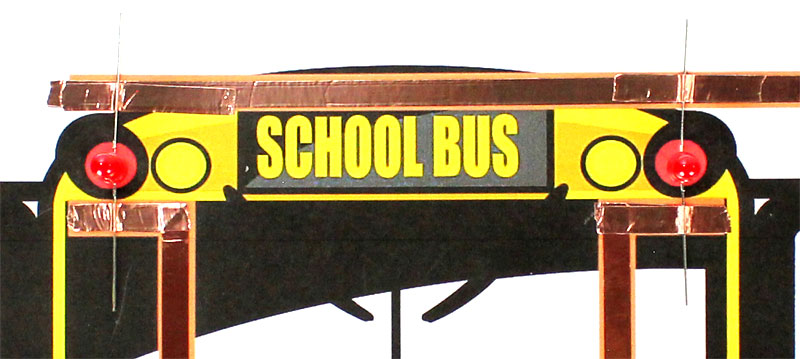
Step 4 – Mount Coin Cell Battery
Cut a small strip of copper tape and roll it up with the sticky side facing out. Make sure it has conductive adhesive like the type we sell in our paper circuit starter kits. Stick the roll of copper to the circuit inside the battery circle.
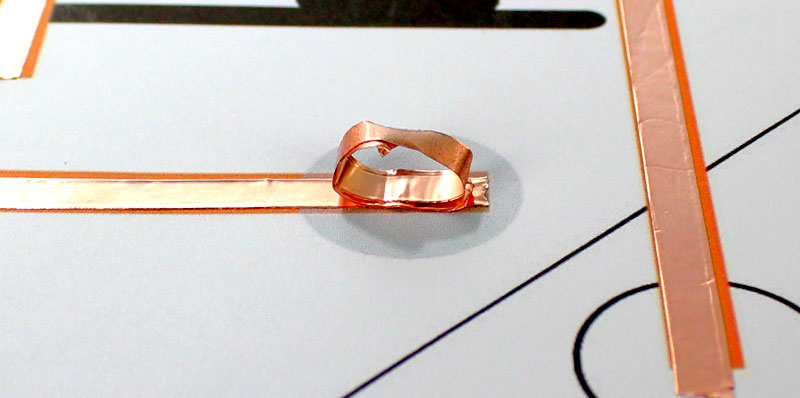
Take your CR2032 coin cell battery and place it on the copper tape roll with the negative (-) side of the battery facing down. IMPORTANT – Make sure the copper tape below the battery is only contacting the very bottom of the battery. The sides of the battery along with the top are positive and you don’t want the copper tape (-) below to touch the sides which are positive (+).
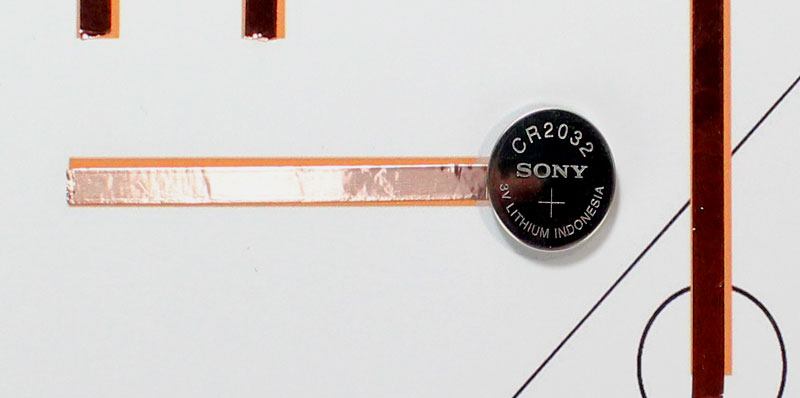
Step 5 – Fold Corner
Fold the corner of the template at the diagonal line and secure it with a paperclip.
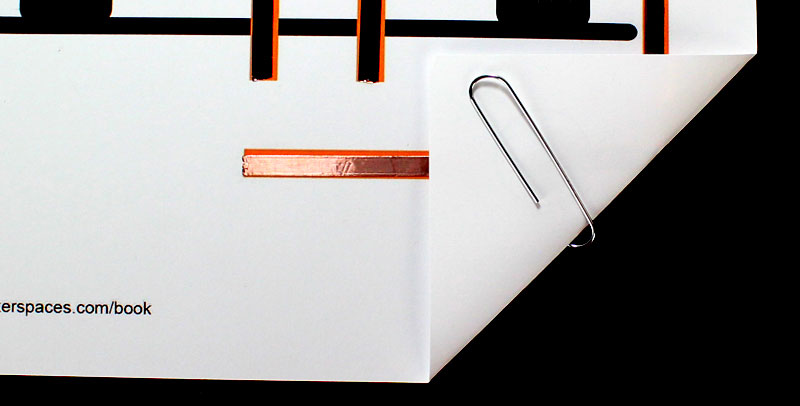
Step 6 – Attach Paper Clip Switch
Cut a small line in the copper tape at the area shown below.
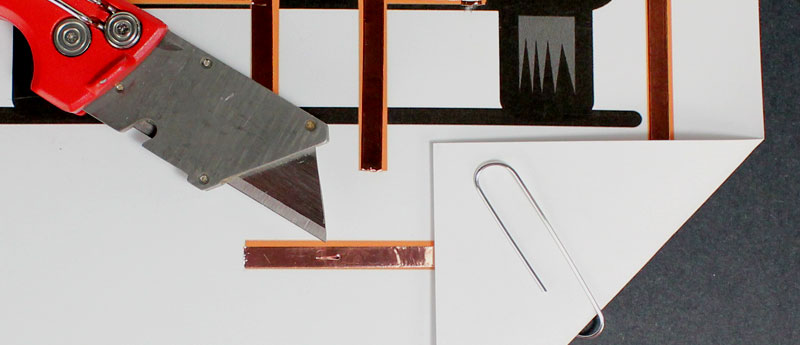
Put a copper brad through one end of a paper clip and insert the brad legs through the cut you made.
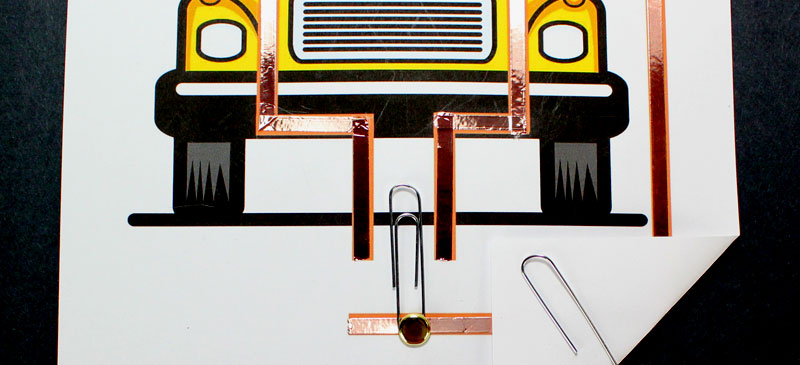
Flip your template over and spread the legs of the brad and secure it to the back of the paper.
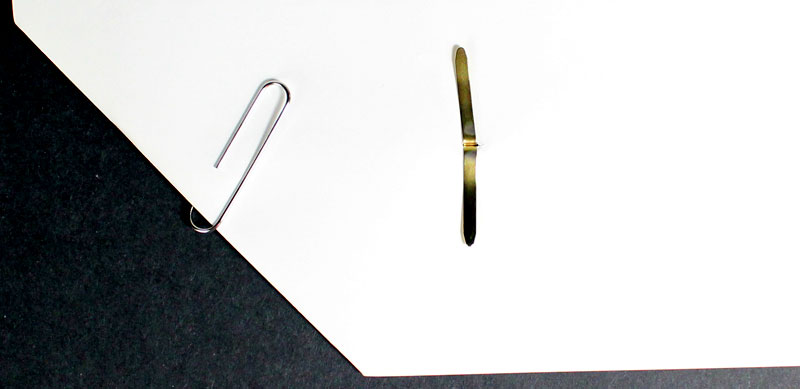
Step 7 – Test Your Paper Circuit
Your school bus paper circuit is ready for testing. Slide the paperclip from side to side making you touch both of the copper tape lines.

Show Us Your Project
Follow us on Twitter at @Makerspaces_com and tweet us if you made this or another project. We love seeing your makerspaces and the creations you’re making.
If you’re looking for more paper circuit projects, please check out our ebook which has 45 project templates along with our paper circuit starter kit.

Looking For More Projects?
Check out our other paper circuit and makerspace projects for more free templates and tutorials.
